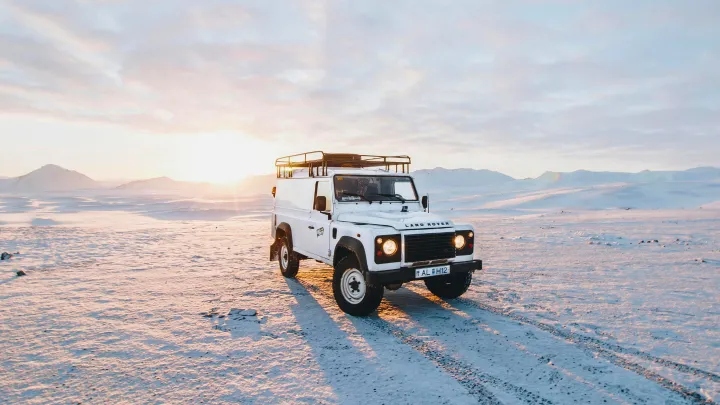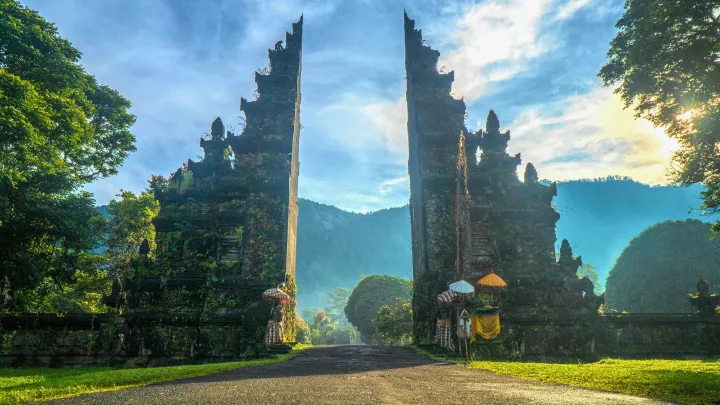The Peace Destinations
Nov 17 • 6 min read
There’s a stillness in Alta that feels almost otherworldly, as if the Arctic pauses just long enough for you to notice the smallest details — the crunch of snow under your boots, the faint glow over the horizon, and the quiet confidence of a landscape that has shaped northern life for thousands of years. Alta, often called the City of the Northern Lights, is where travellers come not only to see the aurora borealis, but to understand why this natural phenomenon has captivated scientists, explorers, and Arctic cultures for centuries.
Set along the wide curve of the Altafjord in Finnmark, northern Norway, this region is built around long winters, vast wilderness, and skies that darken early enough to reveal one of the world’s greatest natural displays. Whether you’re following the shimmer of green light across Finnmarksvidda, learning the science behind auroras at the Northern Lights Observatory, or meeting the Sami reindeer herders whose stories are woven into the night sky, Alta offers a deeper, more grounded way to experience the Arctic.
This guide explores Northern Lights Alta in full — when to come, how to see them, where to go, and what makes this small northern town an essential destination for aurora hunters.
Best Time to See the Northern Lights in Alta
Hallgrímskirkja is the city’s most recognisable landmark and a centrepiece of Reykjavik sightseeing. The church’s design, inspired by Icelandic basalt columns, creates a striking presence in the Reykjavik city centre. Inside, the tower lift brings you to one of the best Reykjavik viewpoints, with views stretching across the coloured houses, Mt Esja and the Faxaflói Bay coastline. It’s a perfect starting point for Reykjavik first timers.
Aurora Season: September to April
The northern lights are visible in Alta from early autumn to late spring, but certain months offer distinct experiences.
September–October: Alta Autumn Aurora
Early-season auroras dance above colourful tundra. Nights are longer, temperatures milder, and conditions ideal for photography — especially along the Altafjord.
November–January: Polar Night Alta
This period brings total darkness for weeks, offering the highest number of viewing hours. The sky often glows blue during the brief daytime twilight, adding a dramatic contrast to the nights.
February–April: Clear Skies and Bright Auroras
These months offer stable Alta weather, crisp temperatures, and clear nights. Many consider March the best month for Northern Lights Alta.
Understanding the Northern Lights in Alta
What Are the Northern Lights?
Auroras are bands of light created when charged particles from the sun collide with gases in Earth’s atmosphere. The result is a glowing curtain of green, pink, violet, and white that moves with surprising grace.
How Are Northern Lights Formed?
Solar particles enter Earth’s magnetic field near the poles. When they strike oxygen or nitrogen, they create colours:
- Green — oxygen at 100 km
- Red — oxygen at 300 km
- Violet/Blue— nitrogen
Why Alta Is One of the Best Places to See Them
Alta has a famously dry, stable winter climate, meaning clearer skies than coastal Norway. Finnmarksvidda, with its open plateau, offers wide horizons with minimal light pollution.
Are Northern Lights Real?
Yes — aurora borealis is a scientifically studied atmospheric phenomenon.
Are Northern Lights Dangerous?
Not at all. They are harmless to humans and animals.
How Often Do Northern Lights Appear?
In Alta, they can be seen on most clear nights from September to April.
Where to See the Northern Lights in Alta
1. Finnmarksvidda Plateau
One of the best Northern Lights Alta locations. The open Arctic plateau gives unobstructed skies and extremely clear nights. Dog sledding Alta tours often run here.
2. Altafjord
Auroras reflected on water create some of the region’s most beautiful photography conditions. Quiet laybys along the fjord make ideal viewing spots.
3. Sorrisniva & the Ice Hotel
The Sorrisniva Igloo Hotel Alta — the world-famous ice hotel in Norway — sits away from city lights. Guests often see auroras right outside their rooms.
4. Northern Lights Cathedral
A striking piece of modern architecture in the city centre, inspired by swirling aurora shapes. While not a viewing place, it’s symbolically central to Alta’s identity as the City of Northern Lights.
5. Northern Lights Observatory (Haldde Mountain)
Alta is home to the world’s first northern lights observatory, founded by Kristian Birkeland. Reaching the site requires a long hike or guided excursion in winter.
Deep Exploration: Alta’s Culture, Nature & Arctic Experiences
Sami Culture in Alta
The Indigenous Sami people have lived across Finnmark Norway for thousands of years. Reindeer herding remains central to their way of life.
- traditional herding
- joik (Sami song)
- local stories about the northern lights
- the importance of migration routes across Finnmarksvidda
Kven Culture and Alta’s Heritage
Kven people, descendants of Finnish immigrants, contribute to Alta’s unique linguistic and cultural mix. Their traditions are visible in local food, dialects, and the storytelling heritage of the region.
Alta History and the Legacy of the Aurora
Alta played a major role in early northern lights research. Norwegian scientist Kristian Birkeland conducted pioneering studies here, helping the world understand what makes northern lights possible.
Rock art Alta — including the UNESCO rock art sites — reveals that humans in Alta observed and interpreted the sky thousands of years ago.
Alta Attractions Connected to the Landscape
Alta Museum & UNESCO Rock Art
Located at Hjemmeluft, the Alta Museum sits beside some of northern Europe’s most significant petroglyphs. The Alta rock carvings depict ancient hunting, rituals, and Arctic life, offering glimpses into early northern societies. These Alta petroglyphs link ancient culture with the region’s modern identity.
Sorrisniva Ice Hotel
One of Alta’s most iconic attractions. Rebuilt every winter, the Igloo Hotel Alta features ice suites, ice sculptures, and the famous Alta ice bar. Staying here is a unique Arctic experience, especially under aurora-lit skies.
Finnmarksløpet — Europe’s Longest Dog Sled Race
Held each March, this legendary event begins in Alta. Visitors can watch teams prepare their sleds or join shorter dog sledding Alta experiences that run throughout winter.
Alta Outdoor Adventures
- Alta snowmobile tours across the plateau
- Alta husky tours through forest and tundra
- ice fishing on frozen lakes
- Alta skiing in winter
- Alta hiking and mountain biking in summer
- Alta photography spots for aurora and landscapes
Each activity connects travellers to the region’s wilderness.
Where to Stay in Alta
Luxury stays in Alta offer comfort, atmosphere, and direct access to the region’s northern lights experiences. Sorrisniva Igloo Hotel, the original ice hotel in Norway, is one of the most unique places to spend a winter night, with its sculpted ice suites and quiet location far from city lights. Thon Hotel Alta is a reliable choice for travellers who prefer modern comfort and a central base, placing you close to the Northern Lights Cathedral, cafés, and guided excursion pick-up points.
Mid-range and budget options cater well to travellers who want a cosy stay without compromising on location. Canyon Hotell sits near Alta port and offers a stylish setting within walking distance to local restaurants and shops, while Trasti & Trine Lodge stands out for its warm hospitality, local food, and excellent aurora visibility. For budget travellers, Alta River Camping provides simple cabins close to nature and outdoor activities, while Nordlys Hotell Alta offers clean, practical rooms with easy access to public transport and the main roads leading to popular viewing spots.
Practical Tips for Visiting Reykjavik
- Check the Alta weather forecast daily — cloud cover is the biggest obstacle.
- Stay at least three nights for the best chances of seeing auroras.
- Wear thermal layers — Alta temperatures drop well below freezing.
- Join a guided tour for expert knowledge, local stories, and safe travel in the wilderness.
- Avoid bright lights — step away from buildings, cars, and streetlamps.
- Bring a tripod — if you plan to photograph the aurora borealis Alta skies.
- Visit multiple locations — the fjord, plateau, and forest offer different experiences.
FAQs
Q1. How do you see the northern lights in Alta?
Find a dark area away from artificial lights, ideally on the Finnmarksvidda plateau or along Altafjord. Clear skies and patience are essential.
Q2. When are the northern lights visible in Alta?
From September to April, with the highest visibility during the polar night Alta period.
Q3. What makes the northern lights?
They form when solar particles collide with atmospheric gases, creating light that follows Earth’s magnetic field.
Q4. Where can you see the northern lights in Norway?
Alta, Tromsø, Senja, Lofoten, and Svalbard — but Alta is among the most reliable due to stable climate and clear skies.
Q5. Are northern lights dangerous?
No, they are completely safe to watch.
Q6. How often do northern lights appear in Alta?
On most clear nights in winter.
Q7. Are the northern lights real?
Yes, they are scientifically measurable and visually spectacular natural phenomena.
Conclusion
Alta offers one of the most meaningful ways to experience the aurora — not rushed, not commercialised, but deeply connected to Arctic nature and culture. Whether you’re standing beside the Altafjord, travelling across Finnmarksvidda by dog sled, or watching the sky shimmer above the Sorrisniva Ice Hotel, the northern lights become more than a sight; they become a memory shaped by the quiet beauty of the north.
You can discover more Arctic journeys like this on The Peace Destinations website.




